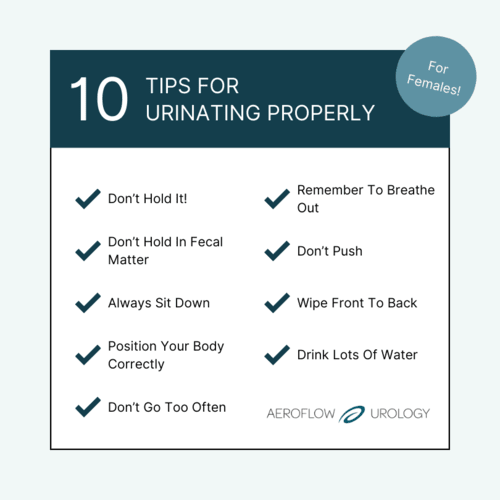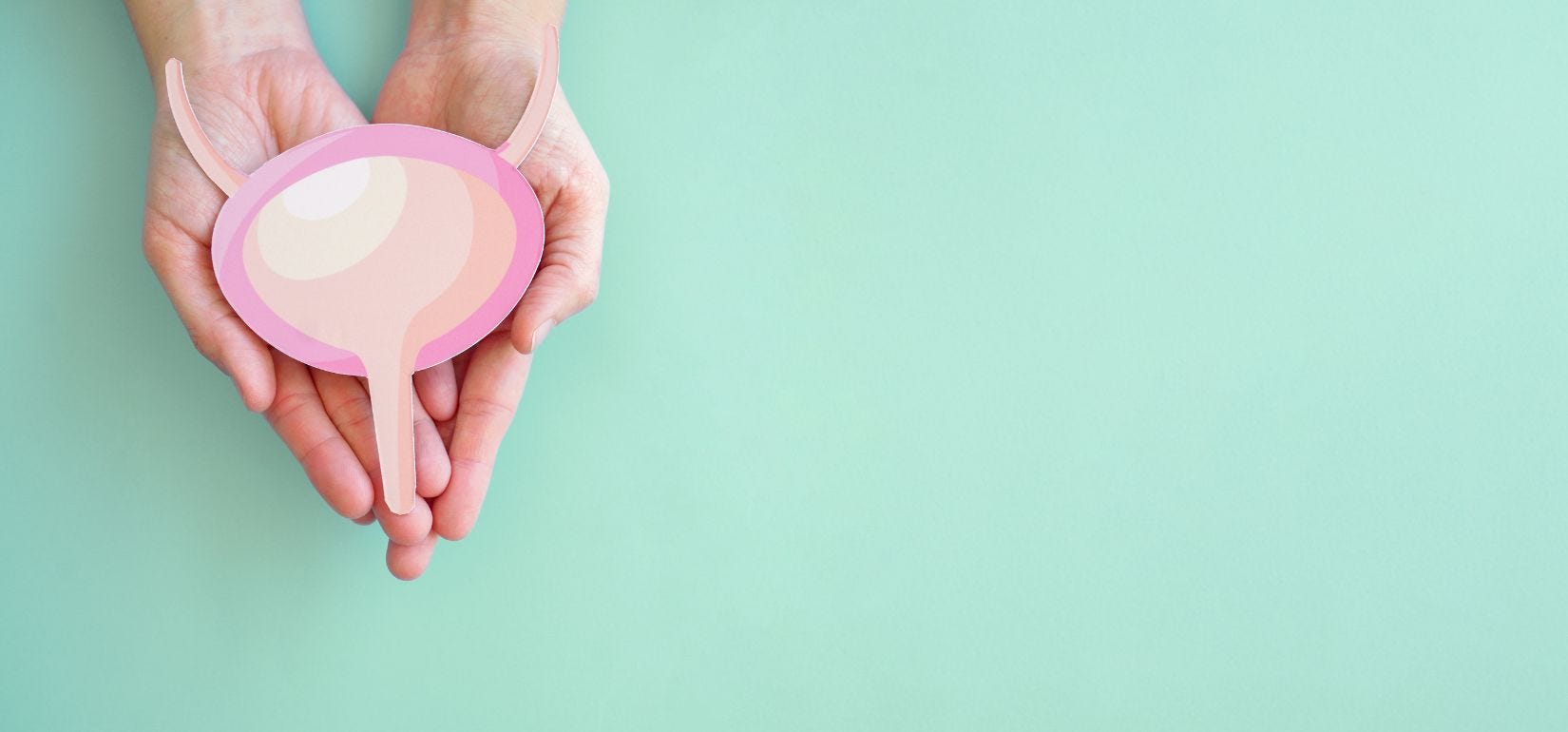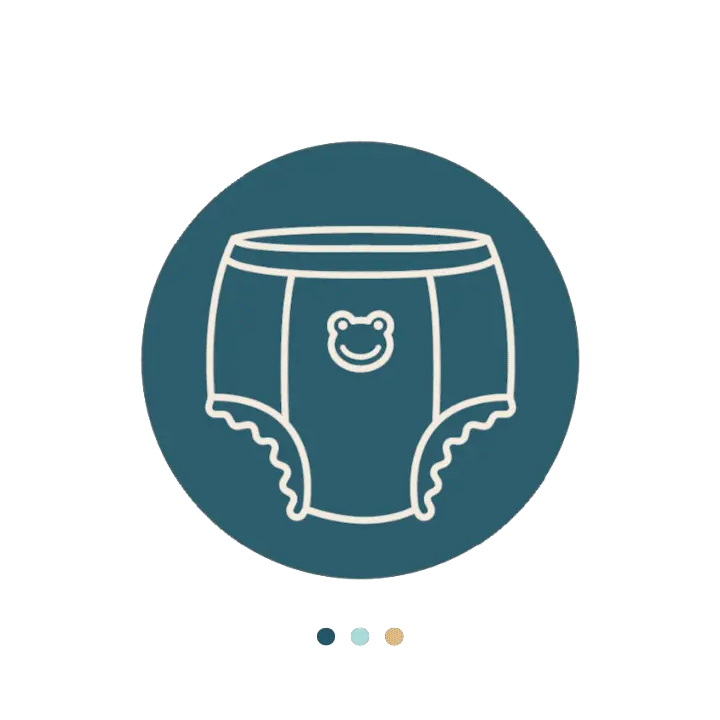Key Takeaways:
- Urinating incorrectly can lead to urinary retention, urinary tract infections, leakage, and more.
- Using the proper techniques, you can ensure successful voiding every time.
Jump To:
What to Avoid When Voiding | 10 Tips to Urinate Properly | Step-by-Step Guide | What to Do If You Have Urinary Incontinence
INCONTINENCE PRODUCTS THROUGH INSURANCE:
Aeroflow Urology is in-network with many Medicaid and Medicaid-managed insurance plans and is accredited by Medicaid. Complete our Eligibility Form, and we’ll automatically check to see if your plan covers incontinence supplies. ***Must meet certain requirements to qualify.***
You will also receive the care and attention every person managing incontinence deserves: A personalized list of 100% insurance-covered incontinence supplies, a dedicated Continence Care Specialist you can contact during business hours, a user-friendly online portal for easy monthly reordering, and educational content.
Get the continence care you need with the dignity you deserve. Join the Aeroflow Urology family today! It only takes 5 minutes to get started.
There's been lots of buzz on social media lately about women's health and how to urinate correctly. Some say the right way to pee is by sitting differently, while others say it's not how you sit, but how you wipe that matters.
There are so many videos and articles out there, it's hard to know which way of urinating is correct.
To help, we've rounded up tips from some of the most informational places available and asked our Medical Advisor and Urologist, Aleece Fosnight, for advice so you can be sure you're setting yourself up for success the next time you use the bathroom.
What to Avoid When Voiding
As it turns out, urinating the wrong way can lead to a whole slew of complications, such as:
- Weak bladder muscles.
- Urinary retention.
- Urinary incontinence.
- Urinary tract infections (UTIs).
- Stretching of the bladder muscles.
What to Avoid:
- Holding your urine for too long.
- Voiding when you didn't need to (the "Just in case" time frame).
- Not drinking enough water.
- Not managing constipation or not defecating when you need to.
- Rushing to go to the restroom when you don't need to go.
- Pushing to void your bladder.
- Thinking that urinary incontinence (UI) is normal despite being common.
10 Tips to Urinate Properly
Let's get right down to it so there's no more confusion on how to urinate correctly! Use this guide next time you go to the bathroom.
1. Don't Hold It!
Waiting to urinate is something everyone does once in a while, whether it's because you're not near a bathroom or you're stuck in traffic. However, holding your urine can lead to some pretty significant side effects, including:
- Damage to the urethral sphincter. This muscle keeps your urethra closed and stops your flow of urine from coming out. When you hold your pee, you may damage it.
- Cramps. If you hold your pee for too long, your muscles may remain clenched even after you void, causing cramps.
- Kidney stones. Holding in your pee can cause kidney stones to form, especially in those prone to them.
- UTIs. Holding your urine in can give bacteria the perfect environment for multiplying, causing infection.
- Pelvic floor muscle damage. Your pelvic floor muscles can become damaged from holding your urine.
- Urinary incontinence. Holding your pee can damage your pelvic muscles, leading to urinary incontinence (UI.
2. Don't Hold in Your Fecal Matter, Either
When you don't make regular bowel movements, you can experience constipation, which can put pressure on your bladder, making you more prone to bladder function issues.
3. Always Sit Down
We've all hovered above gross public toilet seats, but it's not good for your urinary system. It's scientifically proven that your bladder holds in 1/3 of its urine when you hover. Your pelvic muscles also engage when you do this, causing urine to push past them.
It's also important to relax when you urinate, and sitting down is the first step to getting there. Missy Lavender recommends covering the toilet seat if you're worried about germs. Check out the video below to learn more about sitting down when urinating.

4. Position Your Body Correctly
As discussed above, sitting down is the first step to positioning your body. Then, lean forward with a neutral spine, ensuring you're not arching your back. Next, keep your feet flat on the floor.
In this video, The Vaginacologist recommends a couple of different ways of positioning your body to urinate, but we recommend not lifting your bottom. Watch the video below for more information on how to sit while peeing.
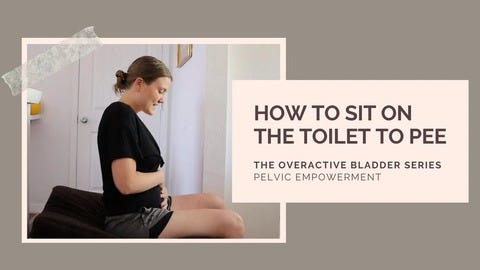
5. Don't Go Too Often
Remember the phrase, "Just try to go before we leave?" It turns out that's not great for your urinary system.
Going to the bathroom frequently can cause overactive bladder (OAB) symptoms because your bladder becomes used to peeing when it feels even a small amount of urine inside, even when it's not full. Try to only go when you need to. You should pee about 6-8 times in a 24-hour period.
6. Remember to Breathe Out
Relaxation is essential when urinating. Holding your breath can put pressure on your bladder muscles, causing strain. After sitting down, put your hands on your stomach and inhale deeply. Then—and most importantly—lean forward and breathe out as your urine flows. Check out this video from Physical Therapy for Moms.
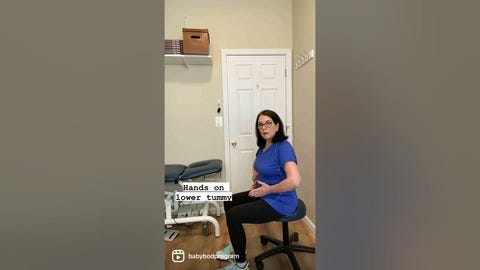
7. Don't Push
If you push while peeing, you can strain your bladder muscles and damage them, leading to UI. Pushing also places strain on your pelvis, forcing your bladder to contract. This could push urine through your partially-closed urethral sphincter, resulting in urge incontinence. Finally, forcing yourself to pee can also cause pelvic organ prolapse (POP) in some cases.
8. Wipe Front to Back
If you wipe back to front, especially after a bowel movement, you're increasing your risk of developing a UTI. This can happen when fecal matter and bacteria spread from your anus to your urethra.
It's also better to dab instead of wipe to help decrease this risk. If wiping front to back is too uncomfortable for you, or if you cannot get all the fecal matter off your bottom, you could opt for a bidet to aid in cleaning.
9. Drink Lots of Water
Drinking plenty of water is a staple of good bladder health. When you don't drink enough water, your urine becomes more concentrated, leading to bladder irritation. How can you tell if you're drinking enough water? Your urine color will tell you!
Healthy urine: Color will range from light yellow to dark amber and have no scent.
Unhealthy urine: Color will be dark brown or cloudy and have a strong scent.
10. Do Pelvic Floor Exercises
You can do specific pelvic muscle exercises to strengthen your pelvic floor muscles. For example, Kegel exercises are a great way to maintain a healthy pelvic floor. In addition, these exercises can aid in incontinence symptoms, decrease your risk of pelvic organ prolapse (POP), and improve your sexual function and overall sexual health.
Step-by-Step Guide
- Take your time.
- Sit all the way down and do not hover.
- Lean slightly forward at a 90-degree angle.
- Use a stool to place your feet on if needed (the 90-degree angle at your knees).
- Belly breathe and relax your pelvic floor muscles.
- Let your urine drain completely by allowing enough time from start to stop.
- Sit for 10 extra seconds to ensure that your bladder is completely empty.
Urinating improperly can lead to UTI, bladder irritation, increased urgency, kidney infection, and improper bladder training. It's essential to take your time and ensure you're urinating properly.
Check Your Eligibility
2 Easy Steps
Discover the continence care essentials available through your Medicaid plan.
What to Do If You Have Urinary Incontinence
If you're managing incontinence symptoms, Aeroflow has you covered. We assist in supplying incontinence supplies through Medicaid and Medicaid-managed care plans to those qho qualify. Want to see if you qualify for incontinence care supplies? Read how it works below.
Instead of heading to the store to find and purchase incontinence products, you can complete our secure Eligibility Form. It's quick and easy to do.
If approved, your incontinence supplies will be shipped directly to your home in discreet packaging every month.
Jump To: Top | Eligibility Form
References
Eating right for the unexpected leak: Water. TENA. (n.d.). Retrieved March 11, 2022, from https://www.tena.us/articles-tips-and-advice/drinkingwater,en_US,pg.html
Lavender, M. (2015). YouTube. YouTube. Retrieved March 11, 2022, from https://www.youtube.com/watch?v=L09JJ1c3Rzc&t=20s.
Pelvic Empowerment (2021). YouTube. YouTube. Retrieved Mar 11, 2022, from https://www.youtube.com/watch?v=D2v_bNG2GO8
YouTube. (2021). YouTube. Retrieved March 11, 2022, from https://www.youtube.com/watch?v=tNZG4bsMGKA.
Disclaimer
Information provided on the Aeroflow Urology website is not intended as a substitute for medical advice or care from a healthcare professional. Aeroflow recommends consulting your healthcare provider if you are experiencing medical issues relating to incontinence.


